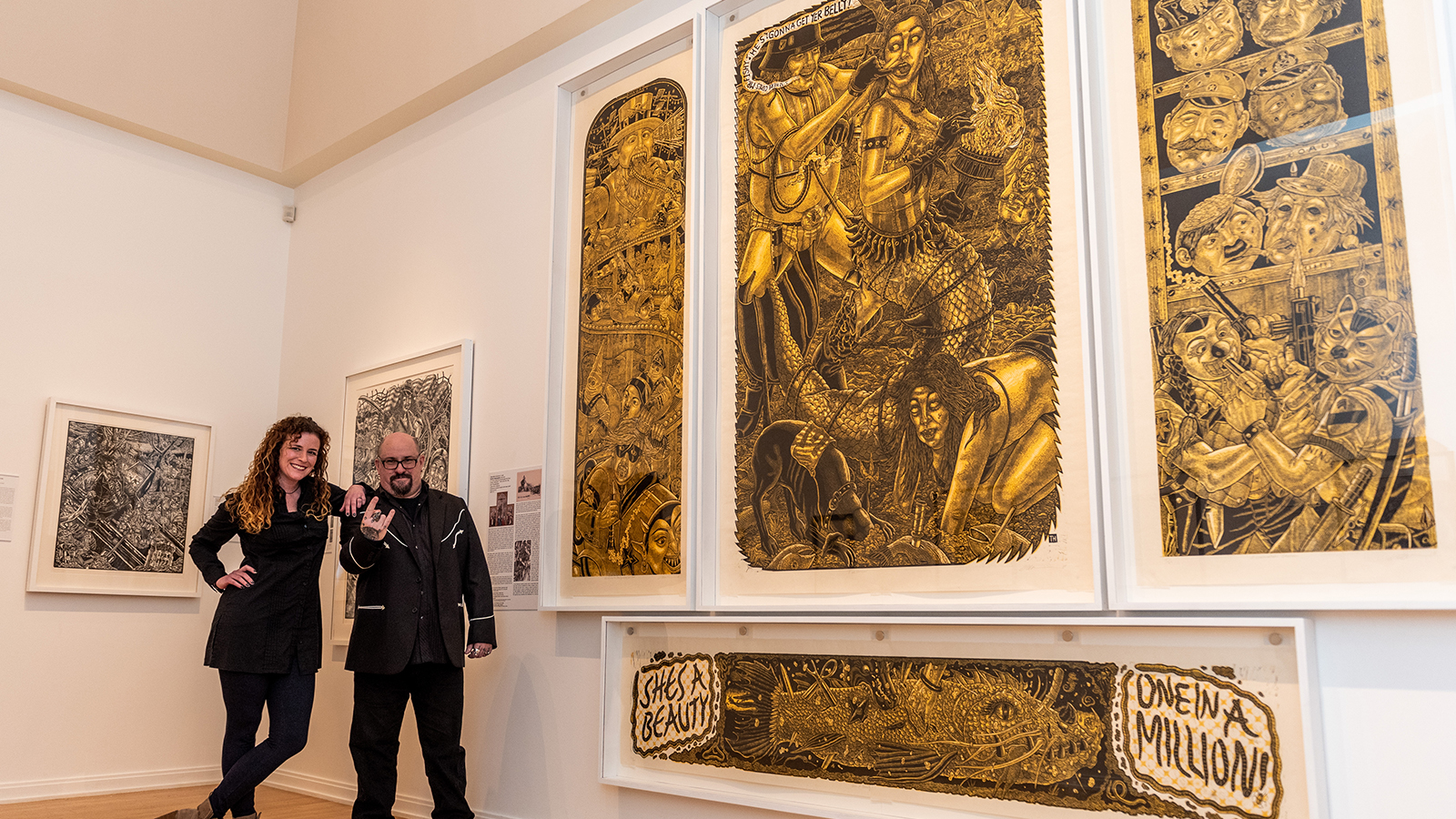Artist Tom Hück’s admiration of Renaissance printmaker Albrecht Dürer is fierce—and indelible. During a life-changing summer when he was 12, Hück encountered the work of Dürer twice: once at the Uffizi in Florence, Italy; and again at the National Gallery of Art in Washington, DC.
“I saw the entire set of The Apocalypse for the first time,” he recalls. “I thought [it was] just badass and wicked as hell!”
It only occurred to Hück, studying art in college, that he too should be a printmaker while taking a required printmaking class: “I made my first print, and that was it. It was a real spiritual knock-you-on-your-ass sort of awakening for me. In that very moment of pulling the paper off of the block, I found what I was born to do.”
Hück now runs his own press, Evil Prints, in St. Louis, Missouri. He and Dürer are the subjects of Rival Cuts: Process & Technique in Prints by Tom Hück & Albrecht Dürer, which brings together the work of student and master, challenger and rival, admirer and hero.
Though he doesn’t remember a single moment when he began considering Dürer as a rival, Hück is fully conscious of the artist’s influence, which he finds motivating. “When I began obsessing over printmaking history, I just so wanted to be a part of it, to leave my mark in there somewhere,” Hück explains. Printmaking history, it should be noted, has left its mark on Hück, who sports Dürer tattoos.
“I remember at a certain point,” Hück notes, “I wanted to make prints that were as great as my hero’s, so every day when I get up and go to work in my studio, I’m thinking about how the hell I can make anything as good as Dürer’s Knight, Death, and the Devil.”
Hück understands the importance of studying art history and finds it difficult to imagine a life unmarked by his pivotal encounter with Dürer. At this point in his career, Hück himself has reached hero status. He has a devoted following of collectors and trains the next generation of printmakers at Evil Press. When asked about his heroes, Hück acknowledges the joy that studying the works of Dürer and other artists has brought to his life.
Electric Baloneyland is the provocative and larger-than-life centerpiece of Rival Cuts. The chiaroscuro woodcut triptych measures 86 x 108 inches, and though similar in technique to the work of Dürer, it is clearly heir to the satire of Daumier and R. Crumb, whom Hück also loves.
“Heroes are important. Art history is important," Hück says, "Young artists need to know what came before.”
A version of this story was originally published in the museum's spring 2019 newsletter.





